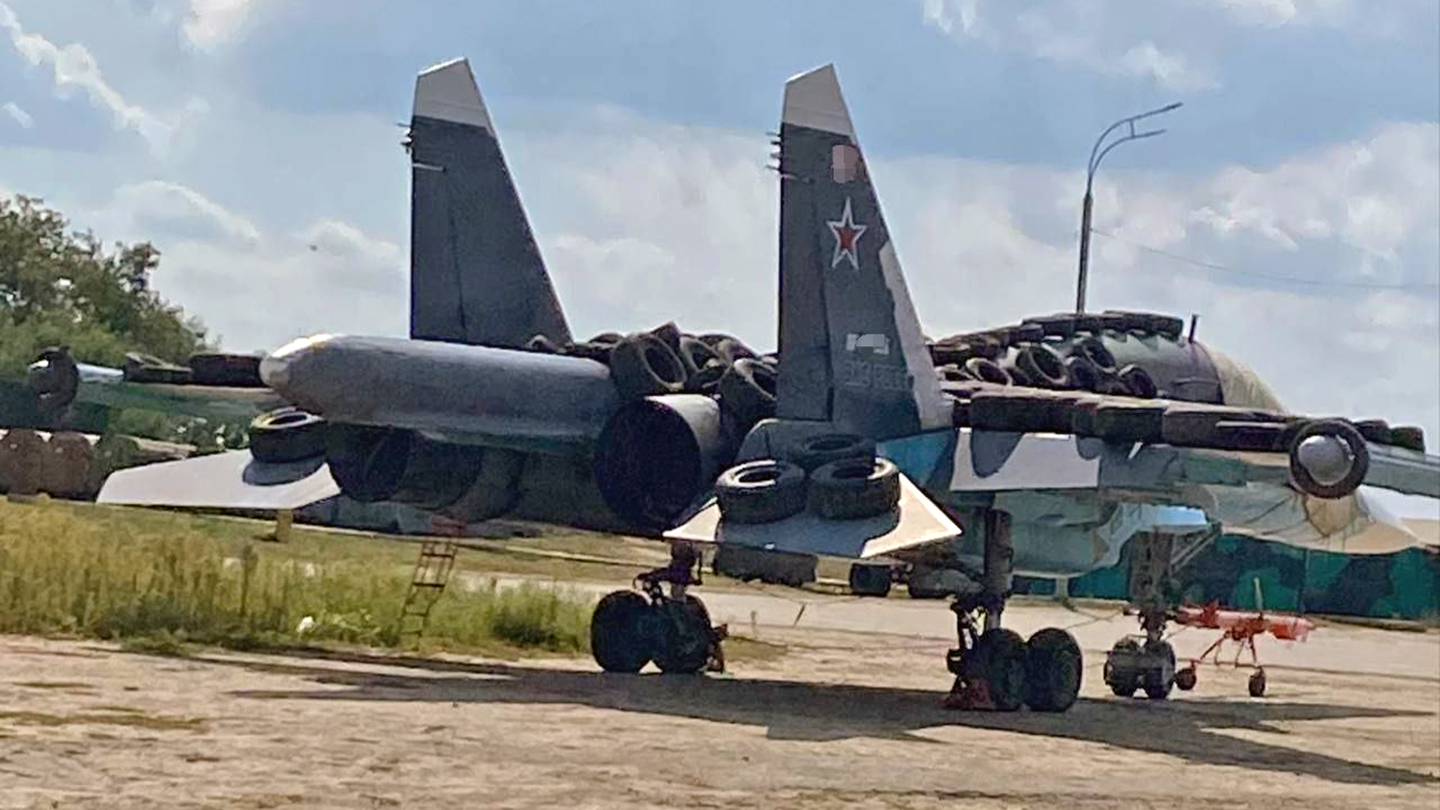A new image showing a Russian military aircraft covered with tires has emerged, this time on an Su-34 Fullback fighter-bomber. The photo, which is not dated, was posted Friday by the influential Russian Aerospace Forces-connected Fighterbomber Telegram channel. So far, we have only seen Russian bomber aircraft with this bizarre countermeasure application.
The image shows a Fullback with tires on top of the fuselage up to its cockpit glass. They can even be seen hanging off the aircraft’s wingtip electronic warfare pods. This image is the first to show one of Russia’s tactical jets so adorned.
We don’t know the exact provenance of the image, which has since been removed from the Fighterbomber Telegram channel. While Fighterbomber did not say where its image came from, The War Zone has obtained a Sept. 6 satellite image from Planet Labs of a Fullback parked in the exact same location at Voronezh Malshevo Air Base near Voronezh in southern Russia as the tire-covered one shown in the image. The aircraft also wears the same dark gray color scheme. Voronezh Malshevo Air Base is primarily home to Su-34s, Su-30s/Su-35s and Su-24 Fencers, among other aircraft. The base sits just roughly 100 miles from the Ukrainian border and is a key installation for providing the aerial component for Russia’s military operations in Ukraine.

It appears the tires were present on the Su-34 when the satellite image was taken. Other Su-34s with the same paint scheme appear much lighter and even toned.

We recently posted high-resolution satellite imagery showing Russia covering turboprop-powered Tu-95MS Bear-H aircraft and swing-wing Tu-160 Blackjack strategic bombers with tires in a fashion identical to what was seen in the Fullback photo.

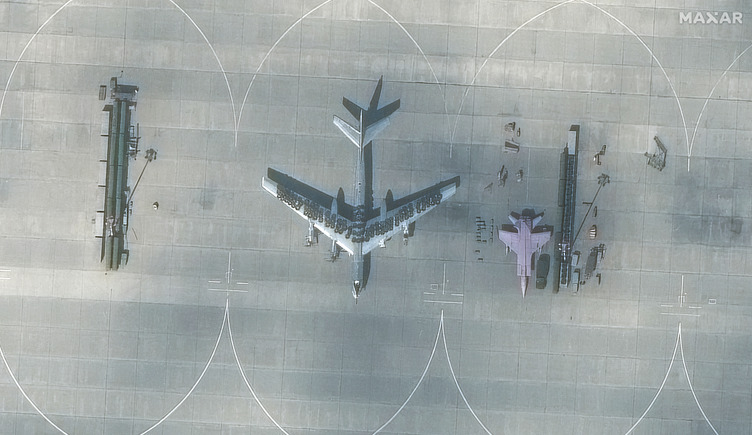
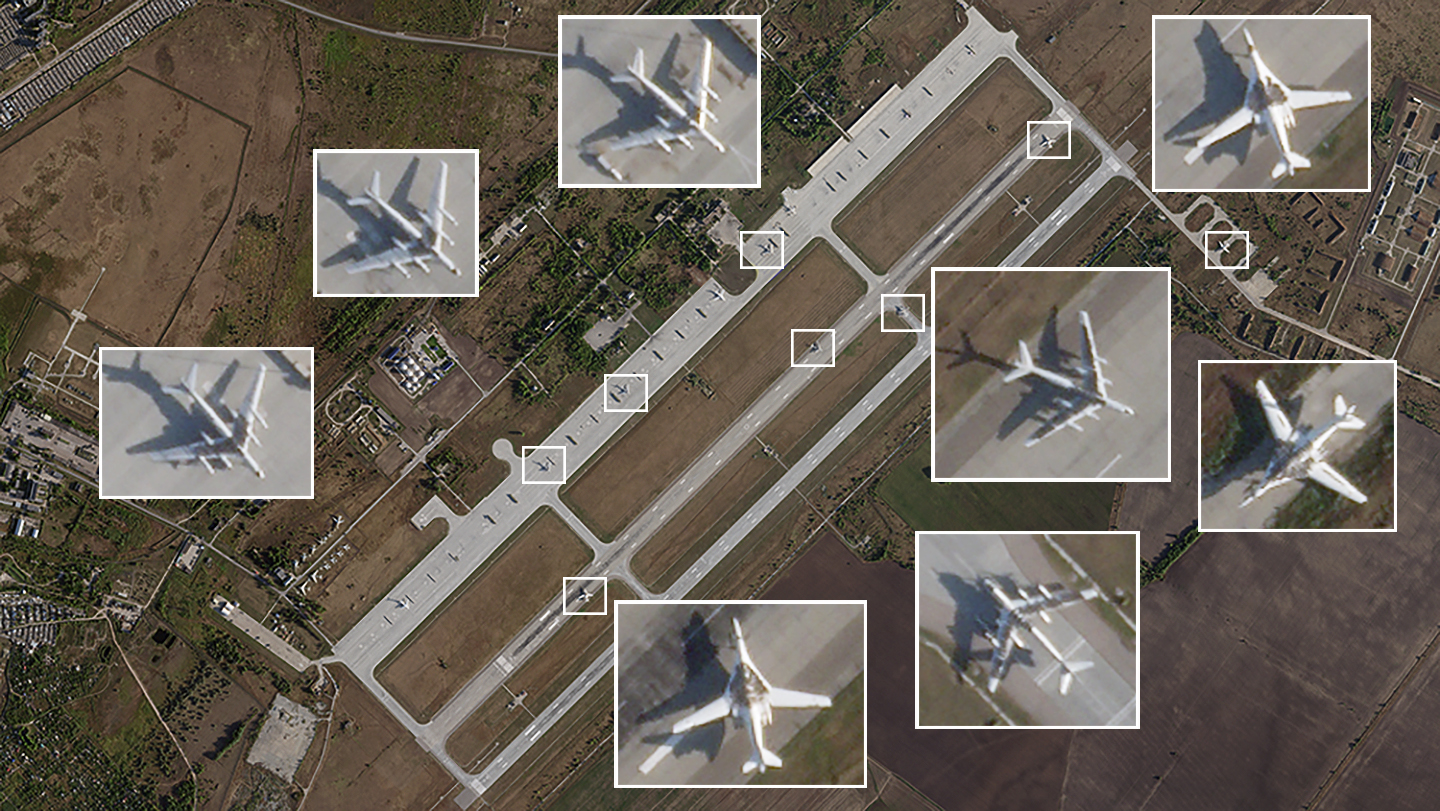
Fighterbomber suggested the tires on the Fullback are part of a growing trend derived out of desperation to protect Russian aircraft in the absence of shelters.
“In general, a campaign across the country began,” Fighterbomber said. “It is clear that this is not all from a good life, and apparently this is the only option to do something quickly and without extortion from personnel.”
Fighterbomber demanded that Russia immediately initiate a campaign to build light shelters or canopies, at public expense, “for combat-ready tactical aircraft at the airfields closest to Ukraine.”
Fighterbomber doesn’t explain the purpose of the tires being placed on the Fullback seen in the picture it posted, or even of those seen in previous imagery. However, its call for light shelters or canopies rather than hardened structures seems to add further credence to our previous analysis that the tires were placed on aircraft not for kinetic protection, but to confuse sensors of attacking munitions:
“A covering of tires could well be calculated to break up the infrared signature of these aircraft, to confuse cruise missiles using image matching for targeting. This technique is also frequently referred to as DSMAC (Digital Scene Matching Area Correlator) or ATR (Automated Target Recognition) when used in cruise missiles. As we have previously discussed, using DSMAC/ATR would provide land attack versions of Ukraine’s homegrown Neptune missiles with a significant advantage, making them largely immune to electronic warfare jamming. At the same time, their approach to the target would not involve any telltale radio-frequency emissions, thanks to the passive nature of the targeting.“
The tires are now also known to degrade space-based synthetic aperture radar (SAR) surveillance that can look right through clouds, providing all weather targeting day and night for standoff strikes. The tires could similarly make it harder for weapons with radar seekers to find their targets, although we are not aware of a Ukrainian standoff munition that uses this concept of terminal guidance. Still, that hasn’t stopped Russia from deploying simple countermeasures for such system before. In fact, they have done exactly that in a relatively wide scale.
While it’s possible that the tires could also have the perceived benefit of providing protection from drone attacks, this is highly unlikely to be the case. Not just because they do provide cover that is literally full of holes, but they are unlikely to stop a kinetic attack and they represent an extremely flammable danger to the aircraft they rest on. Even flares would pose a risk to these aircraft with this countermeasure in place.
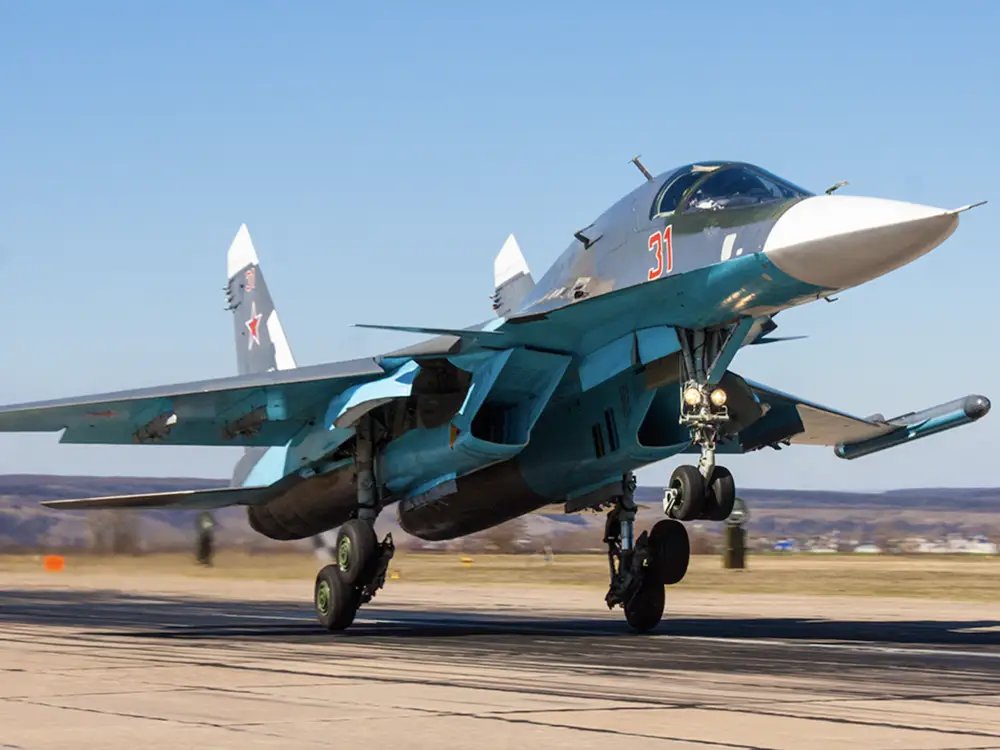
There is much we don’t know about the Fullback in the image. This could be a test that is prelude to a wider deployment of the countermeasure. It could even be an internal gag of sorts, but that seems unlikely. The Su-34 is missing one of its engine nozzles, as well, so it may be undergoing extended maintenance or is suffering from other technological challenges. There has been some confusion as to why some of the tire-laden bombers in the Engels-2 air base imagery are missing engines which is largely due to Russia’s very different maintenance doctrine compared to that of the west. Most notable, the near total lack of hangar support buildings, with most maintenance occurring on the apron.
Fighterbomber inexplicably removed the Su-34 image from its feed and replaced it with an image we have previously published showing the bombers at Engels Air Base in Russia covered with tires.
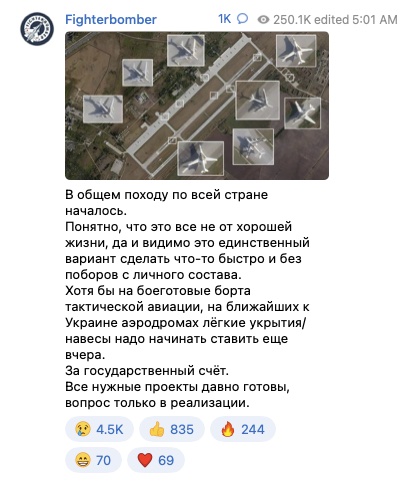
Overall, the Fullbacks have paid a heavy price, largely in the air. Since the start of the all-out war, Russia has lost at least 20 Fullbacks, according to the Oryx open-source tracking group. That loss figure is likely higher because the group only counts aircraft for which it has visual confirmation. High-tempo operations and strains on Russia supply chain due to heavy sanctions are certain to have had a significant impact on the fleet’s readiness, too.
According to the Royal United Services Institute (RUSI), Russia had 130 Su-34Ms in its inventory before February, 2022.
Now we will have to wait and see if more tactical aviation assets receive similar treatment. But one thing is clear. As Ukraine increases its arsenal of domestically-build long-range strike weapons, Russia is finding itself in greater need to protect its aviation assets that are based on its own turf.
Contact the author: howard@thewarzone.com
